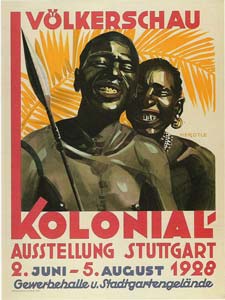Media and the Black Experience
Schedule and Assignment Due Dates
January 24th
SESSION ONE: Introduction
Discuss course syllabus – objectives, schedule, assignments, grading and text. Review writing requirements, and introduce online class journal. Ensure students can log on and post entries. Introduce research paper and Life Arts Project. Discuss definitions of “race.”
- Writing Assignment: Journal 1
- Project homework: Define race.
- Reading: Preface, pp. xi – xxvii
January 31st
SESSION TWO: Equality or Comity? Race Relations in America, Past and Present
Define “equality” and “comity.” Briefly review the history of race relations in America. Examine notions of segregation, isolation and the romanticized Other. Scrutinize archival and contemporary media examples depicting racial tension, assimilation and harmony.
- Writing Assignment: Journal 2
- Project homework: Find a contemporary example of a racial stereotype.
- Reading: The Racial Chameleon, pp. 1 – 15
February 7th
SESSION THREE: Race, Racism and Representation
Examine the construction of “Black” and “White” by investigating how media represent race. Evaluate stereotypes critical to race relations, and explore the development of contemporary ambiguity and/or indifference. Critique racist cartoons, photographs and news clips.
- Writing Assignment: Journal 3
- Project homework: Research paper proposal (1/2 page).
- Reading: White Racial Attitudes in the Heartland, pp. 16 – 45; Culture, Media, and the White Mind: The Character of Their Content, pp. 46 – 59
February 14th
SESSION FOUR: Defining Blackness
Look at varying representations of Blackness, and study how these representations, both positive and negative, come to define Blacks and their communities. Examine multifarious interpretations of Black images by Blacks and Whites, by gender, nationality, education and economics.
- Writing Assignment: Journal 4
- Project homework: Research paper annotated bibliography (min. 5 sources).
- Reading: The Meaning of Blackness in Network News, pp. 60 – 77
February 21st
SESSION FIVE: Blackness Controlled – The Case of Violent/Poverty Stereotypes
Explore connections between stereotypes of Black violence/poverty and actual violence/poverty. How do these stereotypes impact notions of Blackness? Critique media examples for circular relations between violent/poor Black images and violent/poor Black human beings.
Screening:
The Murder of Emmett Till. PBS, 2003. (53 min.)
- Writing Assignment: Journal 5
- Project homework: LAP worksheet and proposal (1/2 page).
- Reading: Violence, Stereotypes, and African-Americans in the News, pp. 78 – 93; Benign Neglect in the Poverty of the News, pp. 94 – 106
February 28th
SESSION SIX: Representing Power – Conflict and Public Policy
Analyze media representations of defiant or empowering Black communities and Black leaders – e.g. Martin Luther King, Jr., Louis Farrakhan, Malcom X, Nelson Mandela. Consider the impact of racial representation on the creation of public opinion. Compare national policies regarding racial segregation, assimilation, equality, justice, religious freedom, education and marriage.
- Writing Assignment: Journal 6
- Project homework: LAP contract and annotated bib (min. 3 sources).
- Reading: Affirming Discord, pp. 107 – 124; Black Power, pp. 125 – 143
March 7th NO CLASSSESSION SEVEN: Representing History
Explore methods of representing and re-creating Black history through film and art.
FIELD TRIP SCREENING or EXHIBIT:
Dreamgirls or New York Divided.
- Writing Assignment: Journal 7
- Project homework: Work on research paper and LAP interview.
March 14th
SESSION EIGHT: Difference and Distraction in Network Television
Look at the modes of racial representation present in past and current network television. Contrast Black and White images, and consider their impact on identity and community.
Screening:
Color Adjustment. Dir. Marlon Riggs, 1992. (87 min.)
- Writing Assignment: Journal 8
- Project homework: Work on research paper and LAP interview.
- Reading: Prime-Time Television: White and Whiter, pp. 144 – 161
March 21st
SESSION NINE: Consuming Color – Racial Separateness in Advertising
Scrutinize Black images in advertising, looking at racist undertones, misrepresentation, stereotyping and identity creation. Contrast White images, and discuss the role of advertising in racial assimilation and social control. Examine past and present ads in various media formats.
- Writing Assignment: Journal 9
- Project homework: Submit final research paper (7-10 pages).
- Reading: Advertising Whiteness, pp. 162 – 181
March 28th NO CLASSSESSION TEN: Documenting Race Today
Support fellow CNR/DC-37 students in a screening of films, photographs and sound recordings documenting color in the five boroughs of New York City. Details to be announced.
FIELD TRIP EXHIBIT Colors of New York City - Writing Assignment: Journal 10
- Project homework: Work on LAP interview.
April 4th
SESSION ELEVEN: Black, White or Colored – Race in Hollywood
Evaluate a brief history of Black images in Hollywood. Study racial representation from early cinema to contemporary times. Contrast Black and White roles in Hollywood films and their impact upon identity and social segregation. Introduce subversive images of Blackness.
Screening:
Siren of the Tropics. Starring Josephine Baker, 1927. (86 min.)
- Project homework: Submit LAP questions and background information.
- Reading: Race at the Movies, pp. 182 – 204
April 11th
SESSION TWELVE: Colored Media Today
GUEST SPEAKER: Professor Marlene GrahamLearn what it takes to make colored media today! Evaluate the difficulties of creating images of equality, diversity and harmony while appealing to audiences AND making money.
- Project homework: Work on LAP interview.
- Reading: tba
April 18th
SESSION THIRTEEN: Subversive Blackness
Power and Protest in Black Cinema I: Examine Black images of power and protest in Hollywood.
Screening:
Guess Who’s Coming to Dinner. Dir. Stanley Kramer, 1967. (108 min.)
April 25th
SESSION FOURTEEN: Subversive Blackness
Power and Protest in Black Cinema II: Examine Black images of power and protest in the Blaxploitation films of the 1970’s.
Screening:
Sweet Sweetback’s Baadasssss Song. Dir. Melvin van Peebles, 1971. (97 min.)
- Project homework: Work on LAP transcription and reflection.
- Reading: Morris, Gary. “Blaxploitation: A Sketch.” Bright Lights Film Journal. Mar 1997.
May 2nd
SESSION FIFTEEN: Subversive Blackness
Power and Protest in Black Cinema III: Examine Black images of power and protest in International Black Cinema.
Screening:
Orfeu Negro (Black Orpheus). Dir. Marcel Camus. Brazil, 1959. (107 min.)
- Project homework: Work on LAP transcription and reflection.
- Reading: Ehrenstein, David. “Black Orpheus.” The Criterion Collection.
May 9th
SESSION SIXTEEN: Subversive Blackness
Power and Protest in Black Cinema IV: Examine Black images of power and protest in the Black Cinema of the 1980’s and 1990’s.
Screening:
Do the Right Thing. Dir. Spike Lee, 1989. (120 min.)
- Project homework: Final LAP due (7-10 pages).
- Reading: Ebert, Robert. “Do the Right Thing.” The Criterion Collection.
May 16th
SESSION SEVENTEEN: The Truth About Color
Evaluate and critique media examples and arguments encountered throughout the course. Synthesize contradictory stories into a coherent narrative of racial representation. Incorporate an examination of the role of media, and discuss the future of Blackness in America.
- Project homework: LAP presentations (5 minutes).
- Reading: Reflecting on the End of Racial Representation, pp. 205 – 226
May 23rd
SESSION EIGHTEEN: Documenting Race Today
Produce and attend a public screening of class life arts projects!! Screening material listed includes only full-length viewings. We will also examine numerous radio, magazine, news, television and film clips. Many segments will be screened in class, but you will sometimes be required to view media online.













